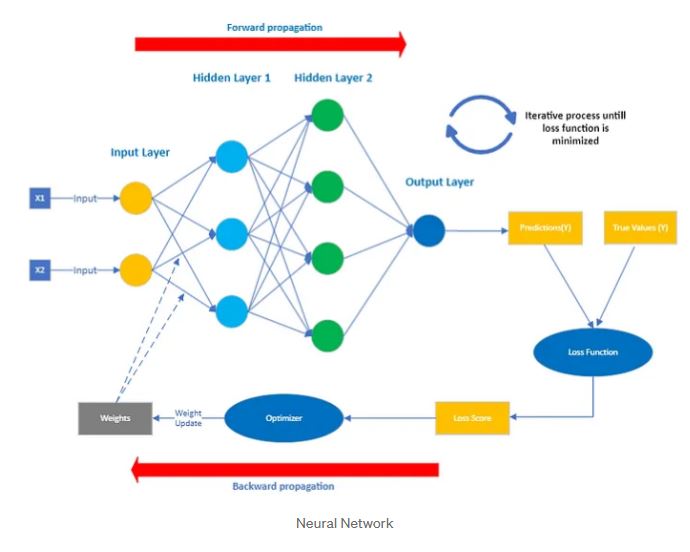A neural network is a type of machine learning model that is inspired by the human brain. It is a network of interconnected nodes, or neurons, that learn to recognize patterns in data.
Neural networks are made up of layers of neurons. The image shows a simple neural network with layers.
- The first layer is the input layer, which receives the data. The second and third layer is the hidden layer, which learns to recognize patterns in the data. The fourth layer is the output layer, which produces the predictions.
- The neurons in each layer are connected to the neurons in the next layer. The connections between the neurons are weighted. The weights determine how much influence each neuron has on the next layer.
- The neural network is trained by adjusting the weights so that the network learns to recognize the patterns in the data. The training process is done using a technique called backpropagation.
- Backpropagation is a process of iteratively adjusting the weights in the neural network so that the network produces the correct predictions. The process starts with the output layer and works its way back to the input layer.
- The weights are adjusted based on the error between the predicted output and the actual output. The error is calculated using a loss function. The loss function measures how well the network is performing.
- The training process continues until the error is minimized. Once the training process is complete, the neural network can be used to make predictions.

